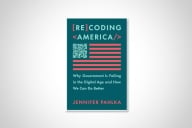You have /5 articles left.
Sign up for a free account or log in.
In response to Tuesday’s piece about simple messaging and the power of “free” as a simple message, an alert reader wrote with a speculation that students might be more inclined to add and drop classes blithely if they weren’t paying tuition.
I sort of doubt it, though it’s ultimately an empirical question. I’d particularly like to hear from readers in Tennessee, where free community college has been done at scale for long enough to see the effects.
The argument for yes revolves around what we know about the sunk-cost fallacy. People who have paid for tickets to a concert in advance are more likely to go, even if they’re in a lousy mood and the weather is bad, than people who got the tickets for free. That’s because if they skip something they paid for, they feel like they’ve lost money. In truth, the money is spent whether they go or not, but feelings are what they are. Once money has been spent (“sunk”), there’s a determination to get something for it.
Still, I don’t think the sunk-cost argument would apply so much to classes. That’s because I don’t think that being free of tuition means being free of cost.
As those of us at community colleges know well, most students work significant hours per week for pay. The time they spend in class is time they can’t devote to a paid job. (For in-person classes, add the time and expense of getting to and from campus on a regular basis.) Even if the students don’t have to pay for classes, they still bear the opportunity cost of work hours forgone.
If anything, eliminating tuition may allow students to spend slightly fewer hours working for pay. That would enable more attention to class, more studying and greater success; success, in turn, tends to encourage retention. That observation is consistent with studies on what happens when classes move from commercial textbooks to open educational resources. Most of us have seen students try to get through a class without buying a book in an attempt to save money. That leads to high fail rates, which leads to financial aid issues, and so on. When the material is free, pass rates improve. That’s because suddenly every student can afford access to the material. Nobody tries to skate by without the book.
I’m guessing that the same principle would apply to classes. Students who can afford to devote time to classes and studying are probably likelier to succeed than students who are scrambling just to afford tuition and books. The entire #RealCollege movement is based on that insight, and its results are encouraging.
Still, an empirical question is exactly that. Wise and worldly readers in places with large and long-standing free community college programs—Tennessee, I’m looking at you—have you seen a significant increase in students churning through classes? Or have students been more likely to stick around, given more time to do the work?







